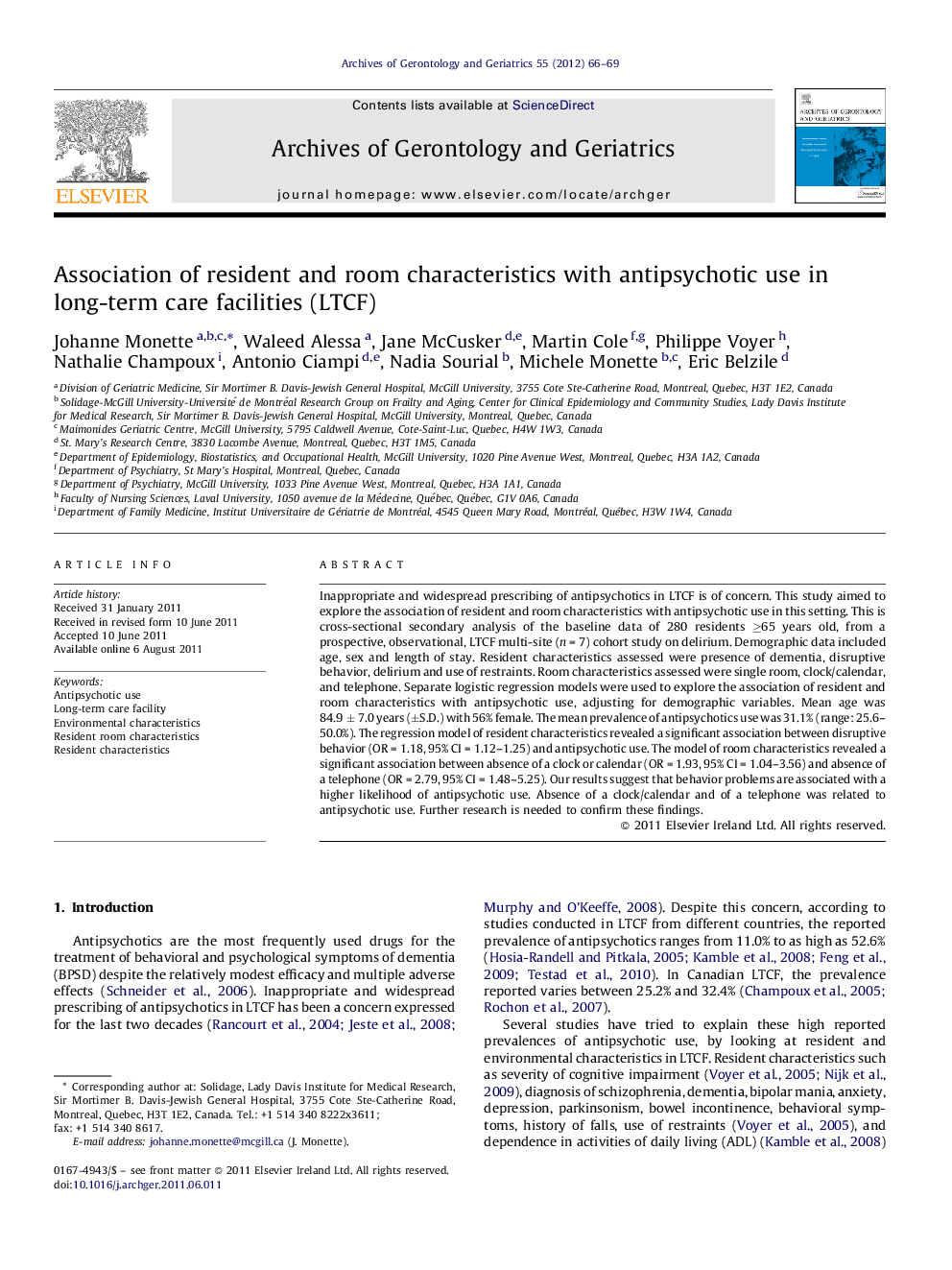| Article ID | Journal | Published Year | Pages | File Type |
|---|---|---|---|---|
| 1902858 | Archives of Gerontology and Geriatrics | 2012 | 4 Pages |
Inappropriate and widespread prescribing of antipsychotics in LTCF is of concern. This study aimed to explore the association of resident and room characteristics with antipsychotic use in this setting. This is cross-sectional secondary analysis of the baseline data of 280 residents ≥65 years old, from a prospective, observational, LTCF multi-site (n = 7) cohort study on delirium. Demographic data included age, sex and length of stay. Resident characteristics assessed were presence of dementia, disruptive behavior, delirium and use of restraints. Room characteristics assessed were single room, clock/calendar, and telephone. Separate logistic regression models were used to explore the association of resident and room characteristics with antipsychotic use, adjusting for demographic variables. Mean age was 84.9 ± 7.0 years (±S.D.) with 56% female. The mean prevalence of antipsychotics use was 31.1% (range: 25.6–50.0%). The regression model of resident characteristics revealed a significant association between disruptive behavior (OR = 1.18, 95% CI = 1.12–1.25) and antipsychotic use. The model of room characteristics revealed a significant association between absence of a clock or calendar (OR = 1.93, 95% CI = 1.04–3.56) and absence of a telephone (OR = 2.79, 95% CI = 1.48–5.25). Our results suggest that behavior problems are associated with a higher likelihood of antipsychotic use. Absence of a clock/calendar and of a telephone was related to antipsychotic use. Further research is needed to confirm these findings.
